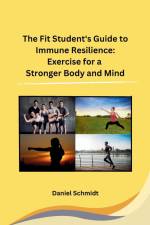av Daniel Schmidt
319,-
In today's fast-paced world, students often find themselves juggling multiple responsibilities, from attending classes and completing assignments to maintaining a social life. With so much on their plates, it's easy for physical health to take a backseat. However, what many students may not realize is that regular physical activity can significantly boost their immune function.Physical activity has long been known for its positive effects on overall health and wellbeing. Engaging in regular exercise not only helps to maintain a healthy weight and improve cardiovascular fitness but also plays a crucial role in strengthening the immune system. As a student, prioritizing physical activity can be a game-changer when it comes to staying healthy and resilient.When we exercise, our bodies undergo several changes that directly influence our immune function. One of the key benefits of physical activity is its ability to increase blood circulation, delivering essential nutrients and oxygen to all parts of the body, including the immune system. This improved circulation allows immune cells to move more freely, enhancing their ability to detect and eliminate harmful pathogens.Regular physical activity also stimulates the production and release of endorphins, which are natural chemicals in the body that promote a positive mood and reduce stress. Studies have consistently shown that stress can weaken the immune system, making individuals more susceptible to illnesses. By engaging in activities such as running, swimming, or dancing, students can effectively manage their stress levels and, in turn, boost their immune function.Moreover, physical activity has been found to reduce inflammation in the body, which is a common underlying factor in many chronic diseases. By lowering inflammation, exercise helps the immune system function optimally, preventing the development of various illnesses.To reap the immune-boosting benefits of physical activity, students don't necessarily need to spend hours at the gym. Incorporating small changes into their daily routine, such as walking or biking to class instead of driving, taking the stairs instead of the elevator, or joining a recreational sports team, can make a significant difference. The key is to find activities that are enjoyable and sustainable, making it easier to prioritize physical activity amidst a busy schedule.




